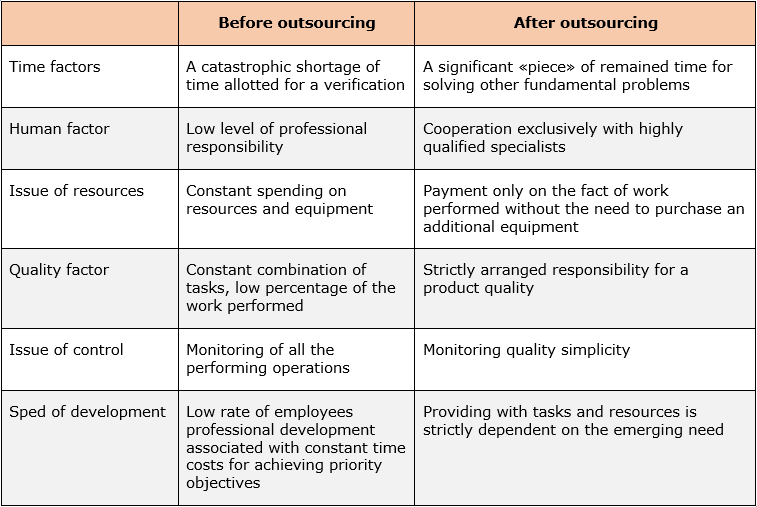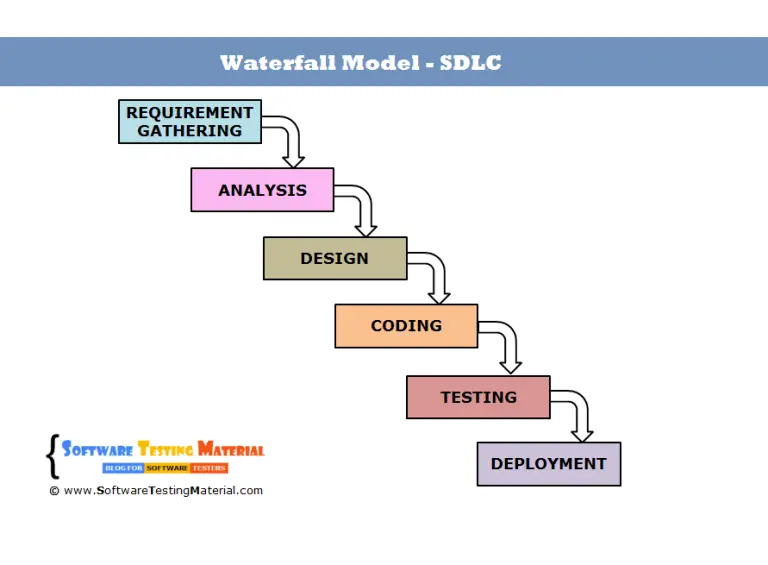How to Minimize Testing QA Outsourcing Risks | Software Testing Material
In this post, we see how to minimize QA Outsourcing Risks. Nowadays more and more companies and corporations from the IT sector use employee in their practices and even companies which work remotely and provide their clients with a certain package of personalized services and offers. Let’s consider these relations through the prism of attracting a remote group of testers (QA specialists) to the project. They should maximally productively and qualitatively “drive away” our product and provide an exhaustive report on the fact that everything works in a proper way and the customer will be completely satisfied.

However, how satisfied and happy are we? After all, such a form of relations (at a distance) can become a catalyst for the emergence of a range of risks and exclusions, which can become the starting point of the next release collapse or the entire assembly of the developed software.
So, first of all, you need to understand: how does «live» and «breathe» QA outsourcing sphere? What are its positive aspects and how to deal with risks? Is it really necessary to have a group of remote testing specialists for your company?
Further, we will analyze everything.
Why QA outsourcing is confused with QA outstaffing: similar realities
Really, it is very difficult to get confused in their names and notations. Especially if the two notations have a very similar definition. In order to eliminate misunderstandings, it is possible to identify the key characteristics of two terms in order to put a kind of equality sign between the notations.
Testing outsourcing:
Testing outsourcing is the performance of tasks to verify the working efficiency. Outside contractor assumes the obligation to perform all the necessary work with the help of outsourcing resources. What is most noteworthy, the testing outsourcing inner activity, as a rule, remains behind the scenes and is not available for customers – the client gets the required result at the end.
Testing outstaffing:
Testing outstaffing is a process of providing staff, to enter qualified employees in a certain direction (QA, back-end, front-end and so on) into the project group. The issues related to the placement and organization of such employees are solved by the head of the company that hired them.
This moment is sorted out. And now the main question: how can you reduce the risks of remote testing on the project? Where is the list of risks and shortcomings that can “mess up” the developing project completely or seriously delay its implementation timing?
However, it is necessary to identify the factors by which IT companies turn to the services of remote specialists before uttering about the risks.
Advantages of outsourcing: the positive aspects of practice
It’s always right to start with the good when analyzing something bad.
Competent distribution of the functional load
The “floating need” phase in a certain group of employees comes during the life of an IT company very often. A very vivid example of this practice is the testing department, which can stay without work at all for a couple of weeks, but then, they “go to a distant voyage in a search of the created product working efficiency” for a couple of months. It is outsourcing that allows you to competently control the workload on staff members. When the notorious “peak” load comes, there is a reason to involve a group of third-party testers on the project in order to quickly and qualitatively prepare the product for the final release and not pay salaries to employees who, in moments of “silence”, are not occupied in general.
Minimizing the cost of attracting new people
We can say at once that the remote hiring of employees allows us to save on a specialist’s salaries but there is also a group of non-obvious factors:
- Office rental;
- Acquisition of necessary equipment;
- Recruiting process;
- Official employment.
It can also be noted that the factors described above require not only money costs but also temporary ones.
«Outside point of view»
Do not be surprised because even the most professional and full-grown team of web developers need a sober view from the outside, which will highlight the specific shortcomings of the product being developed.
Executing a specific task group
Sometimes it happens that the control over the creation of necessary reports and technical documentation for the project is lost after large-scale releases and implementation of basic tasks. Eventually, such omissions can lead to a decrease in working productivity.
Just the execution of such work (for example, writing test cases for a typical product) can be entrusted to a remote team of specialists.
Disadvantages of outsourcing testing: what can prevent and how to solve problems
Some customers began to note that the remote form of testing has received too high prices for the present times. It is worth to mention that this phenomenon should be considered relatively because each developed software product is individual in nature and its payment can vary primarily because of the expected volume of testing performed and QA quotes (in simple terms, the ratio of its qualifications to the quality of the work performed).
In order to solve this problem as correctly as possible, it is necessary to get answers to such query parameters: how long has this QA team been working in the field of remote testing? What period of execution of work do they offer? Are there any reviews on specialized websites (forums, social networks)? How exactly do they suggest to build the process of your teamwork?
It is logical to assume that the more requirements you will put to them, the more expensive it will cost you to test the software “on the side”. That is, you as a customer need to set your own priorities and identify a group of primary desires.
Security questions
Not all IT companies are ready to entrust the internal resources of the software product to outsiders. As a rule, in order to solve this issue, a remote QA specialist is given personal private access only to a certain part of the software functionality or an individual NDA-agreement on non-disclosure of confidential data is concluded.
That is, you need to make sure that he takes into account all the potential risks in the protection of web information and understands all the risks that are placed on him before entrusting the outsourcer with access to the software you create.
In order not to argue with anyone for a long time, do not argue with the expert first, that all the scripts, test cases and other technical documentation created during the testing process is the intellectual property of the client, and can not be used by the remote tester for his reasons.
In order not to swear and argue with anyone for a long time, discuss with a specialist that all the scripts, test cases and other technical documentation created during the testing process are the intellectual property of the customer and can not be used by a remote tester for his reasons.
External factors
If you want to contact external contractors to test the product being developed, it means that you do not have enough qualified employees in-house. If you need to stop cooperation with such a person for some reason, you will have a pile of incomprehensible technical documentation, the purpose of which is not completely clear. It will be very difficult to understand even for the most experienced and professional specialists.
The way out is very simple. Discuss with remote employees all the points about the fact that they test not only its performance but also maintain detailed technical documentation, constantly commenting on non-obvious and complex moments in their templates and designs before you give the product to testing.
Such rules will help you quickly understand the work done and do not waste a time deciphering the provided documentation.
Now you can deal with such a proposal – do you need software test outsourcing at all?
Outsourcing testing relevance
For clarity, it is worthwhile to build a comparative data table: the performed work on testing by remote specialists “before” and “after”.

In order to finally consolidate the analyzed information on the risks of cooperation in the form of outsourcing, it is worth to highlight the following points:
- Project volumes: Only the the QA outsourcing will allow you to correctly use the qualified services for the optimal time and resources if you have few employees in the QA department and the task looks not trivial;
- Project peculiarities: The outsourcing process involves a quick study of the product specifics but sometimes there are situations when it is extremely difficult to learn software features;
- Confidentiality: Sometimes it happens that the established security level is so great that it does not allow to form full access for an external group of outsourcers, which will impose a negative impression on the testing quality of the project functional part;
- Qualification correspondence: It happens that even the most popular outsourcing group of contractors cannot provide a group of specialists who are ready to cope with the task at hand. So, you need to interview several contractors, analyze their functional abilities, choose the favorite.
Conclusion
The outsourcing sphere has become an integral part of modern IT businesses. According to the conducted research, about 77% of companies, which are engaged in building software, intend to continue to use this practice, and about 44% – potentially expect to increase the volume of tasks to attract third-party contractors.
If you understand that outsource QA is suitable for your company, be sure to build mutually beneficial cooperation with a qualified testing service provider, because such an approach will undoubtedly bring you a lot of advantages:
- Focusing on the business processes development within the company;
- Significant cost savings;
- Prompt and qualified assistance from outside;
- Struggle against the disadvantages of the unequal workload of the QA staff department.
Well, we have also told you how to deal with minimizing risks in outsourcing and there are always disadvantages in any field. The main thing is to reduce them to 0, correctly estimating your profile needs and the necessity for a positive evaluation and an optimized result.







